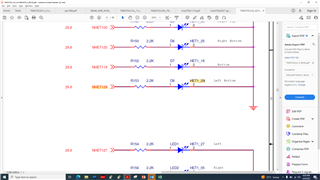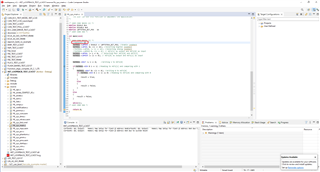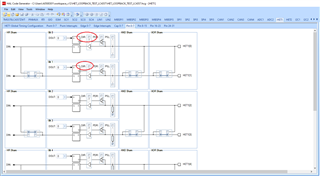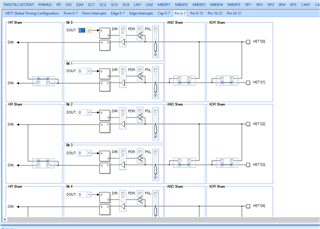Other Parts Discussed in Thread: TMDX570LC43HDK
Hi,
We are using the two High-End Timers (N2HET) for general-purpose I/O and we would like to perform the HET5A loopback test.
However, the test does not behave as expected because it appears that the Loop Back Pair Direction has to be the opposite to that specified in the Technical Reference Manual (SPNU563A) section 23.4.32 for it to work.
For instance.
Step 1. Write 0x01 to HETLBPSEL to select digital loopback on pins 0 and 1.
Step 2. Write 0x01 to HETLBPDIR to set pin 0 as the output and pin 1 as the input.
Step 3. Enable loopback.
Step 4. Write to bit 1 of HETDIN.
Step 5. Check bit 0 of HETDOUT to confirm that it is the same value as written to pin 1 in step 4.
Is this procedure correct?
What I have found is that in step 5 pins 0 and 1 are not the same.
However, if in step 2 I write 0x00 to HETLBPDIR to set pin 1 as the output and pin 0 as the input, but continue to write to bit 1 in step 4, then in step 5 pins 0 and 1 are the same.
So, to get the test to pass I need to set HETLBPDIR to be the opposite to that specified in the Technical Reference Manual.
So, am I doing something wrong or is there an error in the Technical Reference Manual?
Thank you.






